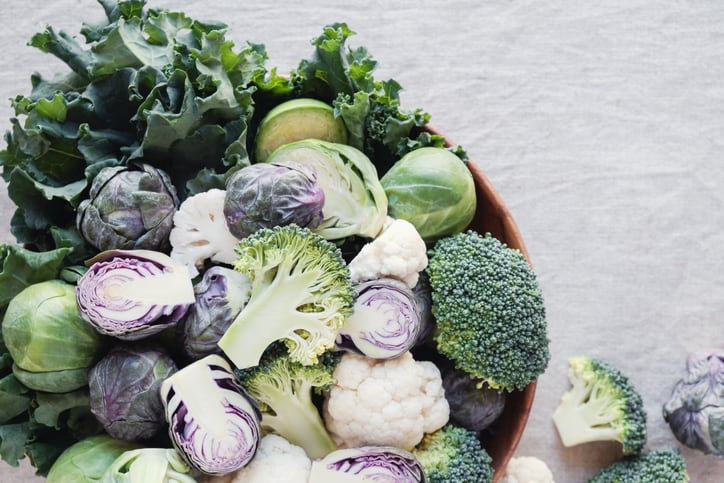The study claims to demonstrate how non-alcoholic fatty liver disease (NAFLD) can be controlled by indole, a natural compound found in gut bacteria and in cruciferous vegetables such as cabbage, kale, cauliflower and Brussels sprouts.
Published in Hepatology, the study also addresses how this natural compound may lead to new treatments or preventive measures for NAFLD.
Chaodong Wu, M.D., Ph.D., a Texas A&M AgriLife Research Faculty Fellow and principal investigator for the study, said: "Based on this research, we believe healthy foods with high capacity for indole production are essential for preventing NAFLD and are beneficial for improving the health of those with it.
"This is another example where altering the diet can help prevent or treat disease and improve the well-being of the individual."
NAFLD occurs when the liver becomes "marbled" with fat, sometimes due to unhealthy nutrition, such as excessive intake of saturated fats and can lead to life-threatening liver disease, including cirrhosis or liver cancer.
Many factors contribute to the disease but fatty liver is seven to 10 times more common in people with obesity because obesity causes inflammation driven by macrophages (types of white blood cells that normally battle infection) which exacerbates liver damage.
Gut bacteria can also influence the progression of fatty liver disease. Gut bacteria produce many different compounds, one of which is indole - a product of the amino acid tryptophan which has been identified by clinical nutritionists and nutrition scientists as likely having preventive and therapeutic benefits to people with NAFLD.
The National Cancer Institute also notes that the indole-3-carbinol found in cruciferous vegetables have anti-inflammatory and cancer-fighting properties.
Therefor the present study aimed to examine the effect of indole concentrations on people, animal models and individual cells to help determine indole's effect on liver inflammation and its potential benefits to people with NAFLD.
Comprehensive multi-level study
Research collaborator Qifu Li, M.D., a physician at Chongqing Medical University in China, led the clinical research involving Chinese 137 participants.
The research team discovered people with a higher body mass index tended to have lower levels of indole in their blood. Additionally, the indole levels in those who were clinically obese were significantly lower than those who were considered lean. And in those with lower indole levels, there was also a higher amount of fat deposition in the liver.
Li noted this result will likely extend to other ethnicities though ethnic background may have some influence on gut bacteria populations and the exact levels of metabolites.
To further determine the impact of indole, the research team used animal models fed a low-fat diet as a control and high-fat diet to simulate the effects of NAFLD.
They found that treatment of NAFLD-mimicking animal models with indole significantly decreased fat accumulation and inflammation in the liver.
The research team also studied how indole affected individual cells. Shannon Glaser, M.D., a professor of Texas A&M Health Science Center, said that in addition to reducing the amount of fat in liver cells, indole also act on cells in the intestine which send out molecular signals that dampen inflammation.
"The link between the gut and the liver adds another layer of complexity to studies on non-alcoholic fatty liver disease, and future studies are very much needed to fully understand the role of indole," Glaser said.
Additional research needed
"Foods with a high capacity of indole production or medicines that mimic its effects may be new therapies for treatment of NAFLD," Wu said, adding prevention is another important aspect to consider.
"Preventing NAFLD's development and progression may depend on nutritional approaches to ensure that gut microbes allow indole and other metabolites to function effectively," he said. "Future research is needed to investigate how certain diets may be able to achieve this."
Wu said in future research he hopes to collaborate with food scientists and clinical nutritionists to examine what healthy foods can alter gut microbiota and increase indole production.
Source: Hepatology
Lingiang. M., et al
"Indole Alleviates Diet‐induced Hepatic Steatosis and Inflammation in a Manner Involving Myeloid Cell PFKFB3"


